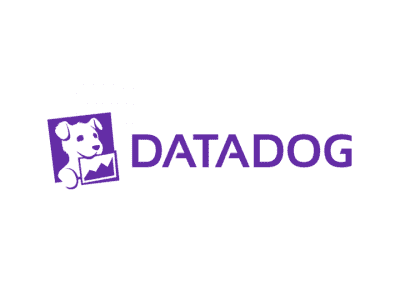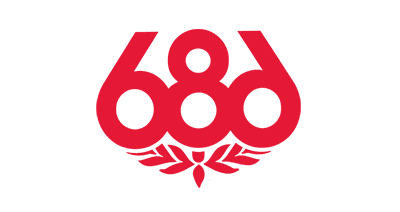A good ROAS typically falls between 200% and 400%. However, factors like your industry, profit margins, marketing channels, and attribution model can all impact this number. Learn what your current ROAS is, what it should be, and how to reach your target.
Not knowing how effective your ad campaigns are can lead to wasted spend and push you further from your business goals.
Return on ad spend (ROAS) is an important metric that shows how much revenue you generate for every dollar invested in ads like pay-per-click (PPC).
The higher the ROAS, the better.
By analyzing ROAS, you can evaluate campaign performance across search and social media, identify your most profitable channels, and optimize your ad budget for maximum return.
So what’s a good ROAS target? Here, we’ll explore how to calculate your ideal ROAS and share expert tips to help you reach it.

The calculation for ROAS divides the revenue you generate from ads by the amount you spend on your ad campaign.(Image: Adobe)
How to calculate ROAS
To calculate your ROAS, divide the revenue you generate from ads by the amount you spend on your ad campaign.
Here’s the ROAS formula:
ROAS = Revenue from Ads / Cost of Ads
So if you spent $100 on ads and generated $300 in revenue, your ROAS is $300 / $100 = $3, which is a 3:1 ratio or 300% return.
For every $1 you invest, you get $3 in revenue.
What’s a good ROAS?
Some businesses consider 200% a good ROAS, while others reach closer to 400%. Ultimately, the benchmark you compare against comes down to your industry.
ROAS for B2C and ecommerce brands
“In B2C and ecommerce, a 3x (300% ROAS) is a good baseline,” says Sam Yadegar, co-founder and CEO of HawkSEM. “However, most of our clients are in the 4-6x range. Ecommerce clients must also consider the cost of goods sold (COGS) to measure true profitability.”
For instance, let’s say you have an ecommerce store that sells T-shirts. You spend $100 on advertising, and as a result, you generate $300 in revenue from sales. This gives you a ROAS of 3x (300%).

Simply looking at the ROAS calculation alone can be misleading. (Image: Adobe)
Yet, to determine the true profit margins of this advertising campaign, you must add in the cost of producing the T-shirts. Let’s assume the cost of goods sold (COGS) for each T-shirt is $10.
If you sold 6 T-shirts ($10 x 6), your total COGS would be $60. Now, subtracting the COGS from the total revenue, you get $300 – $60 = $240.
This means that your advertising campaign generated a $240 profit.
Simply looking at the ROAS calculation alone can be misleading, since it doesn’t factor in the cost of producing and selling products.
ROAS for B2B brands
Now, what if you sell in a B2B space, such as software-as-a-service (SaaS)?
“In B2B, where lead generation is the goal, 300% (3x) is a good baseline,” says Yadegar. “As an agency, we work towards a 5x-7x average ROAS (depending on the service being offered) by focusing on revenue-generating opportunities with ConversionIQ.”
ConversionIQ is HawkSEM’s proprietary software that uses AI to analyze and predict which keywords to use in ads to get more conversions from your best audience (aka paying customers).
Factors that affect ROAS
While industry is one of the biggest factors that determines your ideal ROAS, your personal ROAS will be influenced by your:
- Profit margin
- Customer lifetime value (CLV)
- Marketing channel
- Attribution model
- Business stage and goal
1. Profit margin
The larger your profit margin, the lower your ROAS goals need to be. A business with a 70% margin can break even with a much lower ROAS than one with a slim 10%.
How to calculate your profit margin
Divide the net profit (revenue minus expenses) by total revenue. Then multiply by 100 to express it as a percentage:
Profit margin = (Net profit / total revenue) X 100
How to calculate your breakeven ROAS using profit margin
With that profit percentage, you can calculate how much your ROAS should be according to your profit margin:
(1/Profit margin % ) = Breakeven ROAS
So, if your profit margin is 25%, your breakeven ROAS is:
1/0.25 = 4
This means you need to earn $4 in revenue for every $1 in ad spend just to break even.
2. Customer lifetime value (CLV)
For businesses with many repeat customers or customers with a high lifetime value, you can afford to spend more on acquisition.
Generally speaking, however, a lower initial ROAS might still be a smart investment.
Those with strong retention, such as subscription-based businesses, often aim for a lower short-term ROAS, knowing they’ll earn more from customers over time.
3. Marketing channel
Different types of ads have different ROAS expectations:
Google Search Ads typically yield a high ROAS because of higher intent search traffic.
Social media advertising like Meta Ads may show a low ROAS but contribute to better brand awareness, reach, and move customers along the sales funnel.
4. Attribution model
ROAS results can change depending on the attribution model. For example, last-click attribution can overvalue channels, such as branded search, while undervaluing others like social media.
Multi-touch attribution will provide the most complete picture of campaign performance.
5. Business stage and goal
Do you have a startup? A breakeven ROAS (or even a negative ROAS) could be considered reasonable to acquire new customers and gain market share in the short term.
Meanwhile, an established business could have more rigid ROAS targets.
In other words, is your initial goal growth or profitability? This will impact your ROAS goal.
How to improve ROAS
Your ad campaign revenue isn’t near what you expected it to be. What should you do?
1. Build hyper-specific campaigns
“To maximize ROAS, advertisers should create hyper-specific campaigns, where their customers are with messaging that matches exactly what they’re looking for,” says Yadegar. “Also, avoid advertising in regions where they don’t have the best results.”
2. Use manual bidding
Manual bidding gives you more control over your ads and can increase visibility while lowering advertising costs.
Focus on one campaign at a time, adjust bids for better-performing keywords, and monitor the results closely. Give it a couple of weeks to see if it improves your ad performance.
3. Leverage remarketing ads
Remarketing allows you to re-engage potential customers who’ve previously interacted with your website or clicked on your ads. It serves as a gentle reminder, nudging them towards taking the desired action on your site.
By strategically placing your ads in front of these prospects, you can increase conversions and maximize the effectiveness of your PPC efforts.
4. Try responsive search ads (RSAs)
RSAs create a diverse set of headlines and descriptions for your ads for better personalization.
It helps businesses find the most effective combinations that resonate with their target audience. This can lead to higher click-through rates, improved ad relevance, and better ROAS.
5. Explore PMax campaigns
Google Ads Performance Max (PMax) campaigns use automation and machine learning to optimize targeting and bidding strategies to reach your ideal audience across multiple platforms.
PMax saves time and maximizes conversions with this powerful tool.
6. Optimize your landing pages
A consistent message from your ad copy to landing page is critical to boost conversions.
Make sure your content fulfills the promise you made in your ad, the page is easy to navigate and well designed, and follows all optimization best practices.
7. Conduct audience research
Understanding your target audience’s audience’s demographics, interests, and pain points allows for more effective ad targeting and messaging.
8. Properly set up ad tracking and analytics
Ensure you have robust ad tracking and analytics tools in place to measure key metrics, such as click-through rates, conversion rates, and revenue generated.
9. Test and optimize your ads
Businesses that stick to a single ad creative or messaging without experimenting with different variations are hurting their ROAS potential.
Conduct A/B tests and optimize your ads based on performance to uncover what resonates best with your audience and drive higher conversions.
Common mistakes when calculating ROAS
A lot of small but important details can skew your ROAS calculations, including the true cost of ads.
“Advertisers should consider the costs of managing and running the campaigns — not just the cost for the paid media,” says Yadegar.
Another challenge? Accurately tracking and attributing the revenue generated from your ads.
While a form fill is a clear conversion action that can be tracked back to an ad click, a phone call might be a bit more fuzzy.
Did that person call after clicking your ad? And did the call result in a sale, or was it just an inquiry for more information?
“Tracking and attribution need to be watertight,” advises Yadegar. “A healthy analytics tracking setup that measures all meaningful interactions throughout the entire user journey will help understand which actions are driving revenue and which aren’t.”
Finally, branded keywords can mess with your numbers.
“Sometimes we see advertisers bidding on their own brand name and measuring a return on branded keywords, which skews results,” adds Yadegar.
“A more true measure of ROAS should come from non-branded traffic.”
Why is tracking ROAS important?
ROAS offers insights into the true value of your ad efforts, including:
1. Identifying high-performing channels
It can be challenging to determine where to invest your resources. Tracking ROAS cuts through the noise and identifies the channels that deliver results.
By analyzing the ROAS for each channel, you can pinpoint the ones that generate the highest return on your ad spend.
This knowledge empowers you to focus your efforts and digital advertising budget on the most profitable channels, leading to better outcomes.
2. Maximizing ROI
Tracking ROAS allows you to allocate your advertising budget more efficiently.
By closely monitoring the revenue generated relative to your advertising investment, you can make data-driven decisions to maximize your return on investment.
3. Assessing and enhancing campaign performance
ROAS uncovers patterns, trends, and opportunities to enhance your marketing campaigns.
With this knowledge, you can fine-tune your targeting, messaging, creative elements, or landing pages to optimize your campaign performance.
4. Aligning marketing strategies with business objectives
Tracking ROAS shows the direct revenue impact of your marketing efforts, ensuring your marketing initiatives contribute to the growth and profitability of your business.
ROAS allows you to measure the tangible results of your ads, making it easier to justify your marketing investments and demonstrate their value to key stakeholders.
ROI vs. ROAS: What’s the difference?
While ROAS compares the amount of revenue generated to the advertising spend alone, ROI calculates the profit generated by all of your marketing expenses combined.
ROI considers factors such as production costs, operating expenses, and other investments made in the business.
ROAS measures the revenue generated from advertising efforts relative to the amount spent on those ads.
Real-world examples of businesses improving their ROAS
What good is a strategy if there’s no proof that it works? We gathered three case studies as proof that your business can increase its ROAS using the right methods.
1. Datadog receives a 75% increase in sales demos
Datadog is a cloud-based application monitoring platform that wanted to grow its SaaS license sales. So it partnered with HawkSEM to find a way to make this happen.

When our experts analyzed its pay-per-click account, we saw:
- Poorly rationalized ad campaigns
- Poorly chosen search terms were eating up its budget
- Low-quality ad scores
- A neglected keywords report
- Landing pages needed a redesign
- URLs contained no tracking abilities
So our team built a strategy to dominate Datadog’s digital share of voice by:
- Cleaning up inefficiencies in the advertising account
- Improving the landing page to make it easier for people to use
- Creating new campaigns to capture more traffic
- Making ads that were specific to each product or service
- Showing the ads on other websites to reach more people
The results:
- 75% increase in demo sales by
- 40% decrease in cost per acquisition (CPA)
- Over 3% increase in clickthrough rate (CTR)
2. 686 sees a 360-degree turnaround for ecommerce sales
Apparel brand 686 chose to adopt an ecommerce business model to improve sales of its fashionable tech apparel for athletes and skateboarders.

The only issue is they didn’t know how to reach its online store sales and ROI goals, which included:
- Boosting sales for its winter outerwear
- Maintain a 350-400% ROAS
So they partnered with HawkSEM’s team of PPC experts to talk about customer personas, unique selling points (USPs), and key performance objectives.
The strategies we used included:
- Creating special ads for people in the United States who like 686’s warm clothes (personalization)
- Showing pictures and prices of the clothes when people search for them (visuals)
- Making ads that change depending on what people are looking for (dynamic search ads)
- Showing ads to people who have already visited the 686 website before (remarketing)
The results:
- 714% increase in search engine marketing (SEM) sales transactions
- 562% boost in year-over-year SEM revenue
- 303% increase in ROAS
- 186% increase in conversion rate
- 76% of account impressions had a quality score at 8 or higher
- 67% reduction in cost per conversion
3. ThriftBooks boosts average order value by 50%
ThriftBooks wasn’t new to working with agencies. However, it outgrew its first partnership and wanted an agency that could help it scale. The good news: HawkSEM was given the chance to show them how it’s done.

Its goal was to boost ROAS and grow revenue.
How we achieved it: building more complex campaigns with multi-touch attribution. During implementation, we conducted customer acquisition strategy tests, leading to the discovery of a profitable niche.
The results:
- 50% higher average order value (AOV)
- 35% increase in year-over-year clickthrough rates (CTR)
- Maintained an internal target ROAS
The takeaway
Improving your ad campaigns requires careful tracking, analysis, and optimization to hit higher ROAS numbers.
Using the strategies we provided and avoiding common mistakes, you can improve your odds of reaching higher targets.
However, if you feel it’s a lot of work and would rather focus on your business or other marketing initiatives, then consider partnering with an agency.
HawkSEM is ready and available to help your company plan and execute PPC campaigns that drive sales. Reach out to our digital marketing team today for a free consultation.
This article has been updated and was originally published in September 2023.
